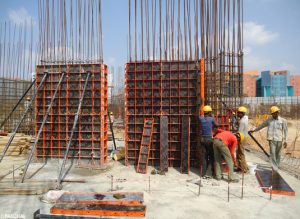When it comes to materials that can withstand extreme conditions and corrosive environments, Hastelloy stands out as a premier choice. Known for its exceptional performance in harsh settings, Hastelloy is widely used in various specialized applications, particularly in industries like aerospace, chemical processing, and power generation. This blog explores the science behind Hastelloy and why its unique composition makes it the ideal material for specialized applications, including the use of Hastelloy pipe fittings.
What is Hastelloy?
Hastelloy is a trademarked name for a series of high-performance nickel-based superalloys developed by Haynes International. These alloys are specifically designed to handle extreme temperatures, corrosive environments, and high-stress conditions. The primary components of Hastelloy include nickel, molybdenum, chromium, and other trace elements, which together create a material with remarkable properties.
Key Elements of Hastelloy and Their Impact
-
Nickel: The base element in Hastelloy, nickel, provides excellent resistance to oxidation and high-temperature corrosion. It also contributes to the alloy’s ability to maintain its strength and toughness under extreme conditions.
-
Molybdenum: This element enhances the alloy’s resistance to localized corrosion, such as pitting and crevice corrosion. Molybdenum is particularly effective in environments that involve chloride ions, making Hastelloy ideal for chemical processing applications.
-
Chromium: Chromium adds to the material’s resistance to oxidation and improves its overall durability. It also contributes to the alloy’s ability to maintain strength at high temperatures.
-
Tungsten: Some grades of Hastelloy include tungsten, which further increases resistance to high-temperature environments and contributes to the alloy’s overall stability.
-
Other Elements: Trace elements like iron, cobalt, and aluminum may also be present, each adding specific properties such as improved strength or resistance to wear.
Why Hastelloy is Ideal for Specialized Applications
-
Corrosion Resistance: Hastelloy’s exceptional resistance to a wide range of corrosive agents, including acids, alkalis, and salts, makes it a go-to material for environments where traditional metals would fail. This property is crucial in industries such as chemical processing, where exposure to corrosive substances is a daily reality.
-
High-Temperature Performance: The ability of Hastelloy to maintain its strength and structural integrity at elevated temperatures is another reason it is favored in specialized applications. For instance, in aerospace and power generation industries, components often operate in high-temperature environments where other materials might degrade.
-
Strength and Durability: Hastelloy alloys are known for their superior mechanical properties, including high tensile strength and resistance to deformation. This makes them suitable for use in demanding applications where structural integrity is paramount.
-
Versatility: The different grades of Hastelloy offer a range of properties tailored to specific needs. For example, Hastelloy C-276 is renowned for its excellent resistance to oxidizing environments, while Hastelloy B-3 is designed for superior resistance to reducing environments.
Hastelloy Pipe Fittings: The Perfect Match for Specialized Applications
In addition to its use in plates, sheets, and other forms, Hastelloy is also highly effective in pipe fittings. Hastelloy pipe fittings are essential components in systems that require durability and reliability under extreme conditions. Their ability to resist corrosion and maintain strength makes them ideal for applications in industries such as:
- Chemical Processing: Handling aggressive chemicals and acids demands fittings that won’t corrode or fail under pressure.
- Aerospace: High-performance systems in aircraft and spacecraft require components that can withstand both extreme temperatures and corrosive environments.
- Power Generation: Fittings in power plants, especially those involved in high-temperature and high-pressure environments, benefit from Hastelloy’s robust properties.
The science behind Hastelloy reveals why it is such a valuable material for specialized applications. Its unique composition, including high levels of nickel, molybdenum, and chromium, endows it with extraordinary resistance to corrosion, high temperatures, and mechanical stress. For industries requiring dependable performance in extreme conditions, Hastelloy pipe fittings and other components offer an unparalleled solution. Understanding the science behind Hastelloy helps in appreciating why this superalloy remains a top choice for the most demanding applications.
If you’re in need of pipe fittings or other components for harsh environments, considering Hastelloy might be the best decision for ensuring reliability and longevity in your systems.













